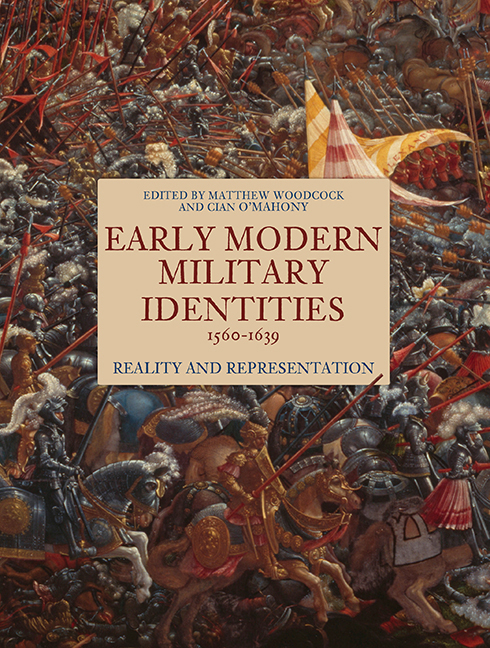Book contents
- Frontmatter
- Contents
- List of Illustrations
- List of Contributors
- Acknowledgments
- List of Abbreviations
- Introduction
- Part I Models of Military Identity
- Part II Military Identities in Early odern Ireland
- Part III Staging Military Identities
- 10 Othello and the Braggart Soldier in the Context of Elizabethan War Veterans
- 11 ‘Lay by thine Arms and take the Citie then’: Soldiery and City in the Drama of Thomas Middleton
- 12 ‘Sometimes a figure, sometimes a cipher’: Dramatic Assertions of Martial Identity, 1580-1642
- Afterword: The Way Ahead
- Bibliography
- Index
12 - ‘Sometimes a figure, sometimes a cipher’: Dramatic Assertions of Martial Identity, 1580-1642
from Part III - Staging Military Identities
Published online by Cambridge University Press: 14 September 2019
- Frontmatter
- Contents
- List of Illustrations
- List of Contributors
- Acknowledgments
- List of Abbreviations
- Introduction
- Part I Models of Military Identity
- Part II Military Identities in Early odern Ireland
- Part III Staging Military Identities
- 10 Othello and the Braggart Soldier in the Context of Elizabethan War Veterans
- 11 ‘Lay by thine Arms and take the Citie then’: Soldiery and City in the Drama of Thomas Middleton
- 12 ‘Sometimes a figure, sometimes a cipher’: Dramatic Assertions of Martial Identity, 1580-1642
- Afterword: The Way Ahead
- Bibliography
- Index
Summary
In his examination of ‘Occupational Identity in Early Modern England’, Mark Hailwood argues that broadside ballads not only ‘provide a valuable entry point for learning how occupational identities were constructed’ but also ‘played an important role in the process of identity formation itself ‘. The present study began with a similar contention regarding the more specific identity of the pre- or proto-professional soldier, though its ‘point of entry’ is not the ballad, but rather, the play. With characters who identify explicitly as soldiers featuring in hundreds of works performed and printed over multiple decades, drama must have helped to shape contemporary perceptions of soldiers in the Tudor and Stuart periods.
Although we are not alone in addressing dramatic works in this volume, this chapter departs from the others within it in both its particular archive and the methodology we rely on to examine it: the claims we make in this chapter are based on what we have learned from mining an electronic corpus containing 1,244 dramatic works for specific linguistic patterns. We will contextualize some specific instances in plays by taking recourse to more traditional primary and secondary sources of military history, but much of what we discuss here hinges on structures of speech that can be detected at a relatively large scale by simple machine processes. Specifically, we compile and examine over 300 assertions about soldiers’ identities that make use of any form of the stative verb ‘to be’. As Wilfrid Sellars contends, constructions of this sort are ontological, establishing both the existence of a category of being and its associated qualities. We will demonstrate here that these types of utterances regarding soldierly identity are more common in early modern dramatic texts than in other contemporary works that circulated in print.
Of course, scholars were mining English drama for insights about early modern identity long before the advent of widespread digitization, and there is a well-established body of scholarship going back half a century devoted to examining ‘the self ‘ and person-hood as primary concerns of the stage. As A.J. Piesse's survey of such scholarship makes clear, much of this work has approached identity in relation to the concepts of subjectivity and self-consciousness.
- Type
- Chapter
- Information
- Early Modern Military Identities, 1560–1639Reality and Representation, pp. 256 - 279Publisher: Boydell & BrewerPrint publication year: 2019

